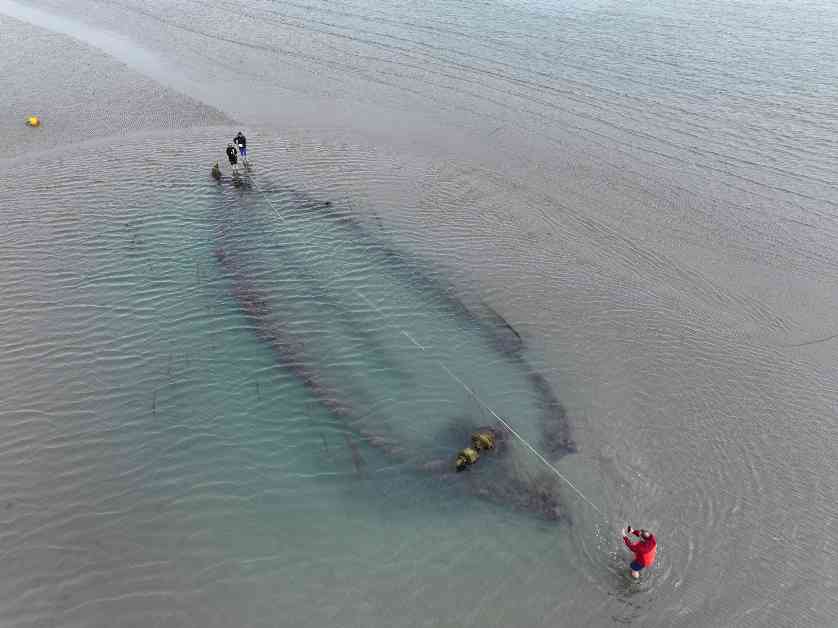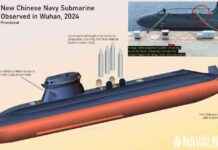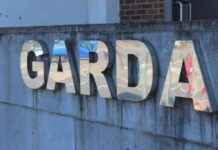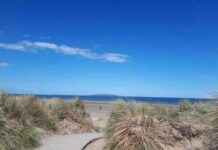Uncovering the Maritime History of Portmarnock Strand
Minister Darragh O’Brien recently embarked on an exploration of the maritime past at Portmarnock Strand in north County Dublin alongside underwater specialist archaeologists from the National Monuments Service (NMS). This investigation was prompted by a report from Nigel Motyer, a local underwater photographer and drone operator, who captured aerial images of a shipwreck revealed by a shifting sandbank on the beach.
The initial inspection by the NMS confirmed that the exposed vessel, potentially a 19th-century fishing trawler, was already recorded in the Wreck Inventory of Ireland. However, what truly caught the attention of the team was the discovery of three previously undocumented shipwrecks in the area. These wrecks, currently in the process of being fully identified, offer a glimpse into the rich maritime history of the region, possibly dating back to the 19th century.
Minister Darragh O’Brien’s Perspective
Minister O’Brien expressed his excitement about the newfound shipwrecks, highlighting the significance of each vessel’s story in shaping the historical narrative of the region. He emphasized the vital role played by the National Monuments Service in protecting and preserving Ireland’s underwater heritage, as evidenced by the extensive database of wreck sites maintained by the organization.
The Minister’s enthusiasm for the discovery was palpable as he underscored the importance of unraveling the mysteries surrounding these shipwrecks and uncovering their contributions to the local maritime legacy. With a wealth of maritime history to celebrate and document, the exploration of these wrecks promises to shed light on the diverse roles they played in shaping the region’s past.
Insights from Senior Archaeologist Karl Brady
Leading the inspection team, Senior Archaeologist Karl Brady provided valuable insights into the process of identifying and documenting the newly discovered wrecks. He explained how prolonged periods of wind had exposed the wrecks by shifting beach sands, offering a rare glimpse into the hidden remnants of maritime history buried beneath the surface.
Despite the challenges posed by continuous tidal and storm action, the NMS team successfully surveyed and photographed the wrecks, capturing crucial details such as timber frames, planking, metal knees, and even a metal winch/windlass system on one of the vessels. Brady emphasized the significance of these findings in piecing together the puzzle of each wreck’s identity and historical context.
Brady also delved into the extensive research conducted by the NMS, which has uncovered a treasure trove of information about shipwrecks in the Portmarnock/Baldoyle area. From 14th-century trading ships to 20th-century coal-boats, the region’s maritime history is a tapestry of diverse vessels lost to the ravages of time and nature. Through meticulous historical and archival research, the NMS has painstakingly documented these wrecks, offering a window into the past for future generations to explore.
Uncovering the Stories of the Shipwrecks
The newly discovered wrecks off Portmarnock Strand serve as poignant reminders of the perils faced by seafarers throughout history. Many of these vessels met their untimely end during bad weather or stormy conditions, their crews battling the elements in a desperate bid for survival. From failed attempts to seek refuge in nearby harbors to tragic encounters with treacherous seas, the wrecks tell tales of bravery, tragedy, and the relentless power of the ocean.
As Brady highlighted, historical records and maritime sources offer glimpses into the lives of the crew members, the origins of the vessels, and the circumstances surrounding their loss. Stories of rescue attempts by local lifeboat crews, often risking their lives in hazardous conditions, paint a vivid picture of the courage and camaraderie displayed in times of crisis. The wrecks themselves bear witness to these harrowing events, their battered hulls and fragmented remains standing as silent monuments to the past.
The cyclical nature of sand movement on beaches further complicates the preservation of these wrecks, with temporary exposure followed by reburial ensuring their protection from further deterioration. The ongoing monitoring and inspection efforts by the NMS will safeguard these fragile remnants of history, allowing for their continued study and interpretation as they resurface over time.
Unraveling the Mysteries of the Shipwrecks
One of the most intriguing discoveries among the newly uncovered wrecks is a vessel measuring 24.78m in length, possibly a schooner dating back to the 19th century. Despite the challenges posed by the incoming tide, the NMS team managed to capture detailed drone footage of the wreck, revealing its unique features such as a partially intact stern post and rudder. The presence of a rare windlass/winch system at the bow further adds to the vessel’s historical significance, hinting at its past life as a seafaring vessel.
The largest wreck, believed to be the Malfilatre lost 125 years ago, offers a poignant glimpse into a bygone era of maritime travel and trade. Originally built in France, this 116-ton schooner met its fate off the coast of Portmarnock Point, its crew bravely facing the elements in a battle for survival. The efforts of Coastguard crews from Howth, Baldoyle, and Dun Laoghaire to rescue the stranded sailors underscore the heroism and solidarity displayed in times of crisis, a testament to the enduring spirit of maritime communities.
The second newly discovered wreck, a wooden vessel buried in the sands, provides further clues to the region’s maritime past, with composite iron pieces suggesting a late 19th-century or early 20th-century origin. The intricate structural elements of the hull offer insights into the craftsmanship and design of seafaring vessels of the era, hinting at the technological advancements and challenges faced by mariners navigating the treacherous waters off Portmarnock Strand.
Lastly, the third wreck, featuring only the exposed stern end, presents a tantalizing glimpse into a forgotten chapter of maritime history. Framing timbers and hull planking visible above the sand hint at the vessel’s former glory, while the absence of the bow raises questions about its fate and the forces of erosion that have shaped its current state. Despite the challenges posed by time and nature, these wrecks stand as silent witnesses to the triumphs and tragedies of the seafaring past, awaiting further exploration and interpretation by future generations.
As the exploration of the shipwrecks at Portmarnock Strand continues, the NMS remains committed to preserving and protecting Ireland’s rich maritime heritage for posterity. Through meticulous research, documentation, and analysis, these wrecks offer a window into the past, allowing us to connect with the stories of those who sailed the seas and braved the elements in pursuit of adventure, trade, and discovery.
In conclusion, the discovery of the newly uncovered shipwrecks at Portmarnock Strand serves as a poignant reminder of the region’s rich maritime history and the enduring legacy of those who navigated its waters. Through ongoing research and exploration, we can unravel the mysteries of these wrecks, piecing together the stories of the past and honoring the lives lost in the relentless embrace of the sea. As the sands of time shift and reveal the hidden remnants of history, let us continue to explore, preserve, and celebrate Ireland’s maritime heritage for generations to come.












